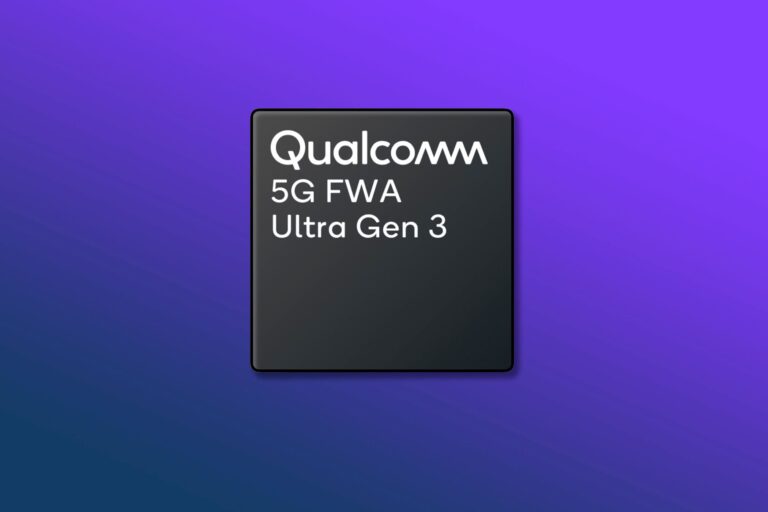Qualcomm is showing off a new platform that could improve the reliability and availability of 5G home internet services. The platform, called 5G Fixed Wireless Access Ultra Gen 3, combines AI, enhanced carrier aggregation, and other tricks to improve the capabilities of fixed 5G modems.
Last year, Qualcomm announced the Snapdragon X75 modem RF system, which brings enhanced 5G performance to mobile devices such as the Samsung Galaxy S24. The Ultra Gen 3 fixed wireless access (FWA) platform is based on the Snapdragon X75. However, as the name suggests, Ultra Gen 3 FWA is targeted at 5G access points used in home, commercial, or industrial environments.
All the benefits of Snapdragon X75 are included in Ultra Gen 3 FWA. Among these benefits, enhanced carrier aggregation may be the most significant. Ultra Gen 3 FWA supports 10 carrier aggregation in mmWave and 5x downlink aggregation in the more popular sub-6 GHz spectrum. Aggregating or “combining” multiple signals can greatly improve network efficiency and provide more reliable (and sometimes faster) connections.
Artificial intelligence is also at the core of the Ultra Gen 3 FWA platform. The 360-degree motorized reflector assembly that helps Ultra Gen 3 FWA maintain consistent mmWave 5G connectivity is controlled by AI. This could be useful in dense cities where mmWave 5G is more common, as ultrafast mmWave signals are susceptible to interference and difficult to pass through walls.
Interestingly, Ultra Gen 3 FWA supports both 10GbE and Wi-Fi 7 connectivity by default. It also uses a simpler design than previous non-Ultra Gen 3 FWA platforms. Qualcomm says the new design consumes less power, occupies less space, and reduces manufacturing costs.
The Qualcomm Ultra Gen 3 FWA platform should have a significant impact on wireless communications. However, the biggest benefits for the average person are improved reliability, 10GbE connectivity, and Wi-Fi 7 compliance. Other improvements, such as reduced cost, size and power consumption, will primarily benefit businesses that need dozens of 5G access points, such as farms.
Yes, the Snapdragon X75’s enhanced carrier aggregation features may result in a slight speed increase. However, significant increases in 5G speeds will always be limited by carriers and their infrastructure. Most people in the US are experiencing 5G download speeds of less than 200Mbps, and will likely remain that way for another year or two.
Carriers must begin offering 5G modems with Ultra Gen 3 FWA by late 2024. The underlying Snapdragon X75 platform is already used in some smartphones, such as the Samsung Galaxy S24.
Source: Qualcomm


